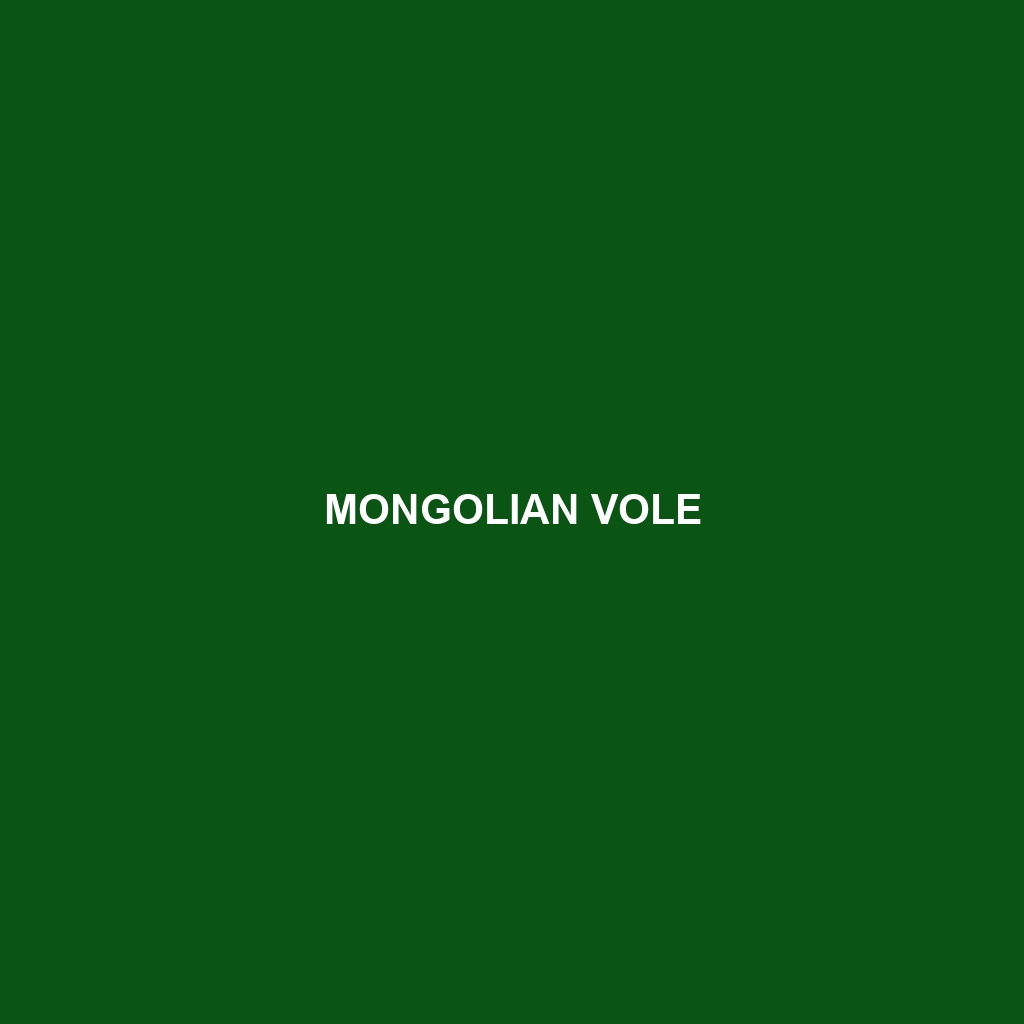Common Name: Mongolian Vole
Scientific Name: Ellobius uncirostris
Habitat:
The Mongolian Vole primarily inhabits the vast grasslands, steppes, and temperate regions of Mongolia, as well as parts of northern China and Kazakhstan. These voles prefer open areas with abundant vegetation, including grasses and sedges, which provide both shelter and food sources. Their burrowing habits allow them to create extensive tunnel systems within these habitats, enhancing their protection from predators.
Physical Characteristics:
Mongolian Voles are small rodents, typically measuring about 10 to 16 centimeters in length, with a tail that is relatively short. Their fur is generally brown or grayish-brown, with a softer undercoat, providing excellent camouflage against their grassy surroundings. Notable features include a rounded body, small ears, and a slightly flattened face, which distinguish them from other vole species.
Behavior:
Mongolian Voles exhibit social behavior, often living in colonies. They are primarily diurnal, meaning they are most active during the day. These voles are known for their burrowing activity, which allows them to create extensive networks of tunnels for shelter and foraging. Mating rituals are often marked by vocalizations and scent marking to establish territory and attract mates.
Diet:
The diet of the Mongolian Vole consists mainly of grasses, roots, and seeds. They play a crucial role in seed dispersal and soil aeration through their foraging behavior. During the summer months, they may also consume various green plants, adapting their diet based on seasonal availability. This herbivorous diet makes them important contributors to their ecosystem’s plant life balance.
Reproduction:
Mongolian Voles have a high reproductive rate, typically breeding from early spring through late summer. The gestation period lasts about 20 days, with females giving birth to litters of 3 to 8 young. The young are born hairless and blind, but they develop rapidly and are weaned at around 2 weeks old. Parental care is provided primarily by the female, who actively protects and nurtures her offspring.
Conservation Status:
The current conservation status of the Mongolian Vole is classified as Least Concern by the International Union for Conservation of Nature (IUCN). However, habitat loss and environmental changes may pose potential threats to their populations in certain regions, making ongoing monitoring essential.
Interesting Facts:
The Mongolian Vole is often studied in ecological research due to its significant role in grassland ecosystems. Their burrowing behavior not only aids in soil aeration but also creates habitats for other species. Additionally, they have a unique ability to thrive in extreme temperatures, making them a fascinating subject of study regarding climate adaptation.
Role in Ecosystem:
Mongolian Voles play a pivotal role in their ecosystem by contributing to soil health through their foraging and burrowing activities. They serve as a food source for various predators, including birds of prey and small mammals, thus integrating them into the food web. Their herbivorous feeding habits help control plant growth and diversity within their grassland habitats, illustrating their importance in maintaining ecological balance.
